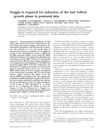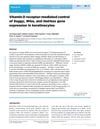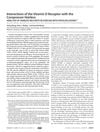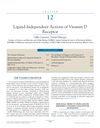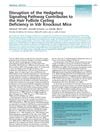Physical And Functional Interaction Between The Vitamin D Receptor And Hairless Corepressor, Two Proteins Required For Hair Cycling
September 2003
in “
Journal of Biological Chemistry
”
TLDR Vitamin D receptor and hairless protein are essential for hair growth.
The study investigated the interaction between the Vitamin D Receptor (VDR) and the Hairless (Hr) corepressor, both crucial for hair cycling. It found that Hr significantly inhibited VDR-mediated transcription, suggesting a repressive role in gene expression related to hair growth. Hr directly bound to VDR, with specific regions identified for this interaction, and colocalized in hair follicle cells, supporting their joint role in repressing gene expression and affecting the hair cycle. The study highlighted the importance of the Hr-VDR interaction in hair cycling, with genetic evidence from mice showing similar hair growth issues in hr gene mutations and VDR-null conditions. These findings provided insights into the molecular mechanisms underlying hair loss associated with mutations in VDR and Hr genes.

